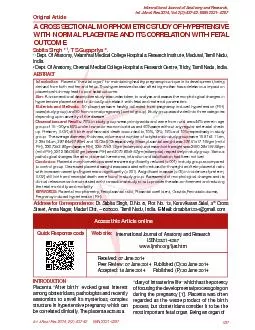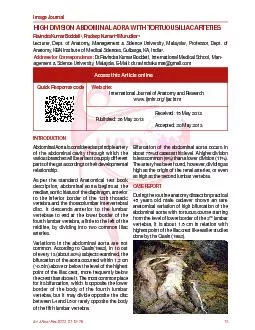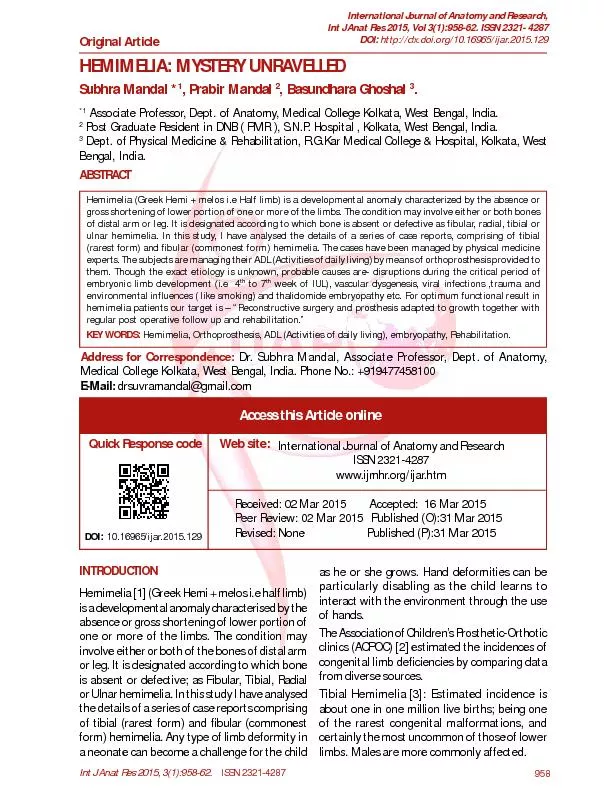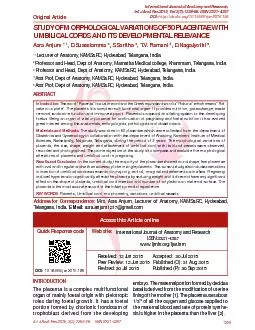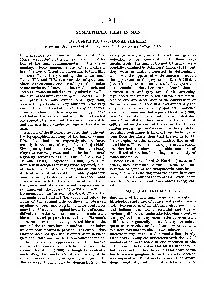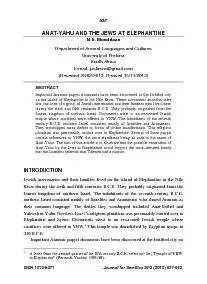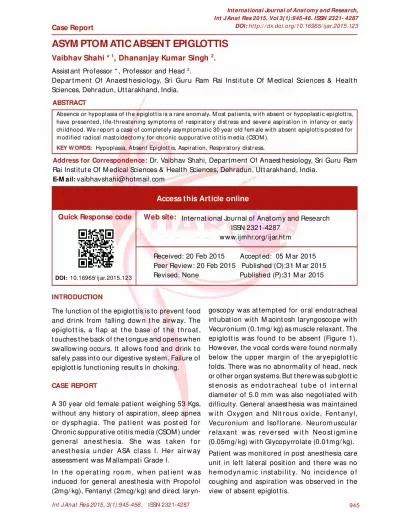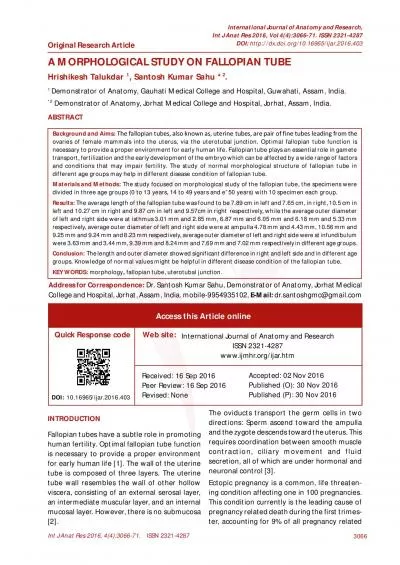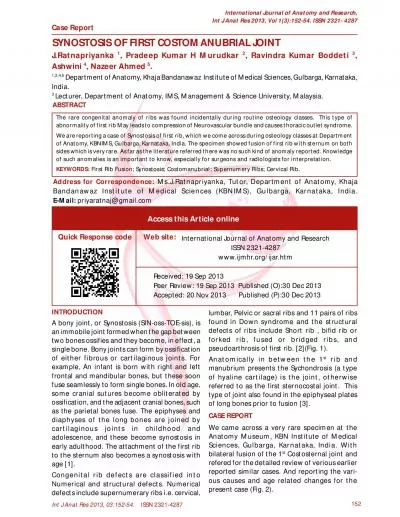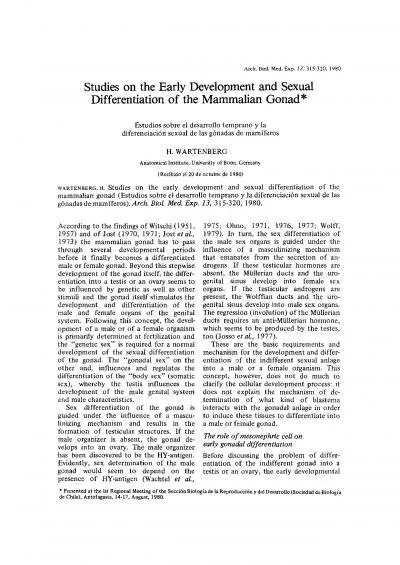PDF-Int J Anat Res
Author : hadly | Published Date : 2022-08-23
2016 43254246 ISSN 23214287 2542 Original Research Article A S TUD Y OF CIR CLE OF WILLIS B Y MR ANGIO GRAPHY Vishal Madhukar Tekale 1 Medha Vijay Ambiye 2 ABSTRACT Address
Presentation Embed Code
Download Presentation
Download Presentation The PPT/PDF document "Int J Anat Res" is the property of its rightful owner. Permission is granted to download and print the materials on this website for personal, non-commercial use only, and to display it on your personal computer provided you do not modify the materials and that you retain all copyright notices contained in the materials. By downloading content from our website, you accept the terms of this agreement.
Int J Anat Res: Transcript
Download Rules Of Document
"Int J Anat Res"The content belongs to its owner. You may download and print it for personal use, without modification, and keep all copyright notices. By downloading, you agree to these terms.
Related Documents


